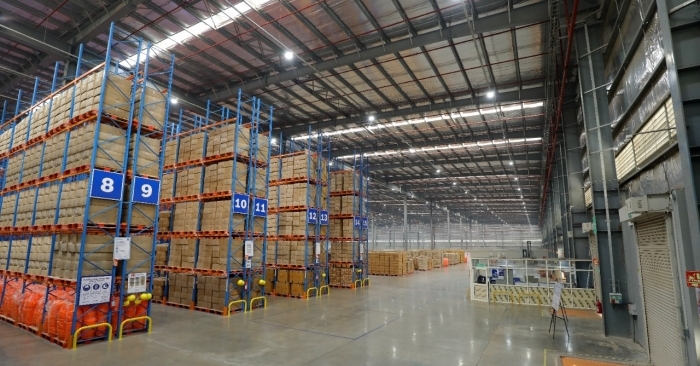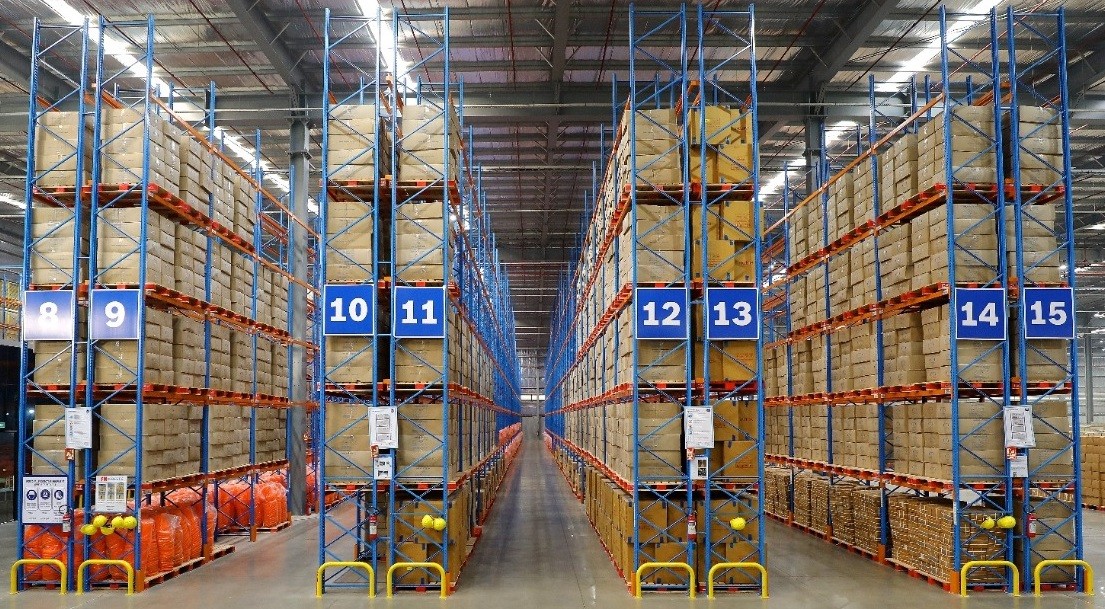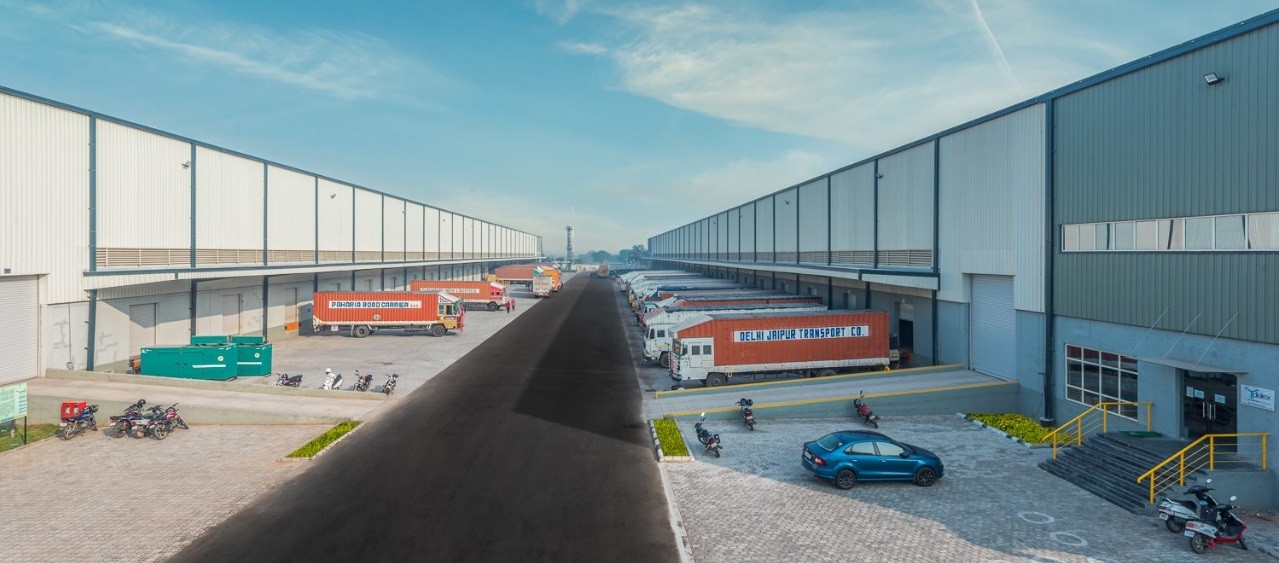Warehousing penetrating deep into Indian geography with smart, quality assets
Warehousing is an important part of logistics that not only helps to store goods but also to efficiently manage the shipments to consolidate and streamline the entire supply chain. With Covid-19 ignited behavioural change, the rise of Tier 2 & 3 cities and e-commerce penetration, Indian warehousing is looking at a bright future.

Warehousing is an important part of logistics that not only helps to store goods but also to efficiently manage the shipments to consolidate and streamline the entire supply chain. With Covid-19 ignited behavioural change, the rise of Tier 2 & 3 cities and e-commerce penetration, Indian warehousing is looking at a bright future.
Indian warehousing industry is at a turning point that will not only make it one of the biggest but also one of the smartest in the world. Along with government policies to nurture India as a global manufacturing hub, the Covid-19 pandemic induced e-commerce boom and the rise of Tier 2 and 3 cities increased the demand for quality warehousing space, particularly the Grade-A facilities with the latest technology innovations.
According to ResearchAndMarkets, India’s warehousing market is expected to grow from $12.2 billion currently to $19.5 billion by 2025. According to a February 2021 report produced by JLL India, the overall warehousing space stands at 238 million sq ft at the end of 2020 compared to 211 million sq ft in the previous year. So a net supply is 27 million sq ft.
“2020 witnessed a net absorption of 22 mn sq ft. However, if we consider gross absorption (Gross Absorption = Net absorptions + Renewal + Churning), that's close to 31 million sq ft. Interestingly, Grade-A properties have been in demand due to adherence to additional hygiene and safety norms and more than half of the absorptions were in Grade-A spaces. Third-Party Logistics (3PL) has emerged as the largest occupier of warehouse space in 2020 followed by e-commerce, jointly contributing to almost 60 percent of the total absorptions in 2020,” reads the report.
Govt policies: GST, infra status, budget
Even though there are different opinions on the reasons behind the growth of Indian warehousing, all industry experts will point to the Goods and Services Tax (GST) as the single most important reform that accelerated the growth and efficiency of this sector. Before GST, the tax regime was controlled by states and companies had to build at least one big warehouse in every state to circumvent the taxes imposed by each state which resulted in a substantially high cost of storage.
With the uniformity of taxes in GST and the needlessness to pay to different states, the companies could build one big warehouse that could serve different states, decrease the number of warehouses and save money. Along with other government policies, the increased infrastructural spending envisaged in the union budget of 2021 is also a boost for the sector.
Aditya Virwani, chief operating officer, Embassy Group, said, “Government policies like the Goods and Services Tax paved the way for well-organized supply chains. The policymakers also granted infrastructural status to the logistics sector. These policies became the two major factors that enabled warehousing businesses to grow. To be more specific, the absorption rate within the industry has increased from 13.3 million sq ft in 2016 to 36.4 million sq ft in 2019, as reported by JLL.”
.jpeg.jpg) Rajesh Jaggi of Everstone: "Pune and Chennai have the highest concentrations of Grade-A stock, 71 percent and 69 percent respectively, due to their primary demand base of auto and auto ancillary occupiers." (Photo: IndoSpace)
Rajesh Jaggi of Everstone: "Pune and Chennai have the highest concentrations of Grade-A stock, 71 percent and 69 percent respectively, due to their primary demand base of auto and auto ancillary occupiers." (Photo: IndoSpace)
Geographical trends: Rise of Tier 2, 3 cities
According to a report of JLL India Industrial Services, in 2019 the Indian warehousing sector witnessed a 15 percent Y-o-Y growth in total net absorption in Grade-A and B warehousing space across the top eight cities namely Delhi NCR, Mumbai, Bengaluru, Kolkata, Pune, Hyderabad, Chennai and Ahmedabad. Now, the sector is witnessing the rise of much smaller Tier 2 and 3 cities. Logistics companies list various reasons including the central government’s focus to make India a global manufacturing hub, presence of industrial freight corridors, e-commerce boom and need for in-city distribution.
Founded in 2015, Embassy Group has its logistics parks built on land parcels between 50-200 acres located in seven key cities- Bangalore, Chennai, Delhi NCR, Mumbai, Pune, Hosur, and Hyderabad.
Virwani, said, “While the logistics markets noticed an increased demand in Tier 1 cities last year, this year, with e-commerce boom, smaller markets such as Coimbatore, Vapi, Guwahati, Ludhiana, Surat, Patna, Bhubaneshwar, Siliguri and Lucknow have shown promising potential for warehousing business. With these developing clusters that are well supported with industrial freight corridors, 2021 is also emphasizing on Tier 2 and 3 cities.”
He notes that multi-location warehouses are very common in Tier 2 and 3 cities now and he anticipates the growth to continue in 2021 as well. “Today, while Tier 1 markets continue to grow at a rapid pace, e-commerce and the pandemic has shifted the focus to Tier 2 cities given the multifold increase in online ordering of groceries, fashion, electronics and retail. Furthermore, the added advantage of industrial freight corridors adds value to these small cities,” Virwani added.
Backed by the private equity firm Everstone, IndoSpace has an investment commitment of over $3.2 billion and 38 operational and under-development parks spread over 40 million square feet. The facilities are located in Delhi NCR, Mumbai, Pune, Bengaluru, Chennai, Ahmedabad, Coimbatore, Anantapur and Rajpura.
Rajesh Jaggi, vice chairman, real estate, Everstone, said, “Pune and Chennai have the highest concentrations of Grade-A stock, 71 percent and 69 percent respectively, due to their primary demand base of auto and auto ancillary occupiers. The Delhi NCR region followed by Mumbai and Bengaluru remained the top three cities in terms of warehouse space absorption in 2019. Increasing demand and a rise in manufacturing will benefit Tier 2 and 3 cities such as Ludhiana, Ambala, Lucknow, Siliguri, Guwahati, Bhubaneshwar, Vishakhapatnam, Vijayawada, Coimbatore, Kochi, Nagpur, Indore, Jaipur and Dholera, which are emerging Grade-A clusters. Some of these cities have witnessed 20 percent growth in warehousing in FY2020, as indicated in a Knight Frank report.”
Welspun One Logistics Parks is a warehousing platform backed by the $2.7 billion Indian global conglomerate Welspun Group and has the capability to deliver annually up to 5 million sq ft of Grade-A warehousing and industrial spaces.
Anshul Singhal, managing director, Welspun One Logistics Parks, said, “With the emergence of many online-only brands in Tier 2 and Tier 3 markets recently, which need warehouse space but no retail space, demand for Grade-A warehousing is also growing at a healthy rate, even in the hinterland. We are looking to acquire land in other major cities such as Delhi, Bengaluru, Pune and Kolkata, and even Tier-2 cities like Lucknow etc.”
Welspun has launched a 110-acre Grade-A warehousing park in July 2020 with a leasable area of 3.2 million sq ft and an investment of ₹900 crore in Bhiwandi, Mumbai. In December 2020, Welspun entered into a contract to lease out 9 lakh sq ft of warehousing space of the same park to the 3PL service provider FM Logistic India.
FM Logistic is a family-owned French logistics company active in 14 countries across Europe, Asia and Latin America. FM Logistic entered India in 2016 by acquiring a majority stake in Spear Logistics and has a presence at 90+ locations and manage 6.0+ million sq ft warehousing space.
The 3PL player also plans to expand operations by another 30 lakh sq ft by the end of 2022-23. FM Logistic is setting up its own warehouses in the major consumption areas of the country like Mumbai, Delhi NCR, Bengaluru, Hyderabad, Chennai etc.
Alexandre Amine Soufiani, managing director, FM Logistic India, said, “The government of India's focus on making India a global manufacturing hub has caused warehousing clusters to expand rapidly beyond the top cities and into Tier 2 and 3 cities. The increasing internet penetration in rural areas, rising household income and the government’s push on digital in rural areas have increased the pressure on manufacturers to move closer to their customer base in these areas.”
 Anshul Singhal, Welspun One Logistics Parks: "The significant shift in buying behaviour will further increase the share of e-commerce in warehousing demand in the medium to long term. E-commerce players need close to three times the warehousing space of traditional retail players, which would speed up the warehousing demand further." (Photo: Welspun One Logistics Parks)
Anshul Singhal, Welspun One Logistics Parks: "The significant shift in buying behaviour will further increase the share of e-commerce in warehousing demand in the medium to long term. E-commerce players need close to three times the warehousing space of traditional retail players, which would speed up the warehousing demand further." (Photo: Welspun One Logistics Parks)
Technological trends: Robots, IoT, AR
Technology is an asset for warehousing companies, especially in managing the inventory seamlessly and safely. Technology also enables businesses to regulate warehouses even in remote locations. This is simply convenient, given the real-time assisting nature of it. Robotic automation, Internet of Things (IoT), Augmented Reality (AR), smart analytics and drones are some of the trends observed by industry experts.
Virwani believes that Indian warehousing is gradually moving towards evolution and 2021 can be anticipated to be the year of technological advancements. “Using technology in maintaining stocks, real-time tracking, ensuring safety and security and keeping a track on the supply, brings down the cost of overall property management,” he said.
Jaggi, said, “The use of technology and supply chain management systems to increase efficiencies will see greater uptake. Some of the alternatives to manual labour like automated storage & retrieval systems (AS/RS), automated conveyor systems and automated sortation systems can increase the efficiency of a warehouse in the long run.”
He argued that the Indian warehousing sector is gradually shifting to IoT to meet the growing requisites. “Levelling up inventory management in a warehouse, IoT not only implements drones to foster productivity by reducing risks but also leverages automated guided vehicles that do not require any human interference.”
Welspun’s recently announced Bhiwandi facility has features like park management and maintenance on a tech-enabled platform, an IoT-driven traffic management system to minimize travel distance and trucks with RIFD tags to predetermine directions and docking.
Singhal noted that, along with increased consumption growth, demand for lower delivery times and higher labour costs, the trend for smart warehousing is gaining prominence in the country.
“Interconnected technologies like robotics, RFID, IoT or AI are globally used as they help to substantially reduce time and costs towards delivery. We, in India, are at the cusp of adopting these smart warehousing measures,” he said.
In India, FM Logisitc has implemented drones for inventory control, fully automated packing lines, paperless operations with bar code scanning, GPS tracking at its warehouses and notes that these are just the initial steps towards a long automation journey.
Soufiani said, “Driven by rapid technological advancements and greater affordability, robotic solutions are entering the logistics domain in a big way”
Globally, FM Logistic uses Augmented Reality (AR) to train its warehouse staff on handling and operating complex processes and use it to demonstrate capabilities to clients.
Soufiani said, “AR is blurring the lines between the digital and physical worlds, augmented reality (AR) will provide new perspectives in logistics planning, process execution, and transportation.”
FM Logistic has also implemented an IoT solution in one of its warehouses for an e-commerce client where they are able to track the performance of operators and also identify the bottlenecks in processes using the data provided by connected scanners. They are also in the process of implementing a digital cockpit that will enable them to monitor the behaviour of container drivers on a real-time basis.
 Alexandre Amine Soufiani of FM Logistic India: "Experts are of the opinion that warehousing would be among the first real estate segments, to recover from the shock of the Covid-19 pandemic and might even attract huge capital, as investors switch to more resilient asset classes." (Photo: FM Logistic India)
Alexandre Amine Soufiani of FM Logistic India: "Experts are of the opinion that warehousing would be among the first real estate segments, to recover from the shock of the Covid-19 pandemic and might even attract huge capital, as investors switch to more resilient asset classes." (Photo: FM Logistic India)
Impact of Covid-19
Like any other business, the Covid-19 pandemic had a very disturbing impact on the warehousing industry. However, the businessmen note that it is one of the fastest to recover also. The positive impacts include the push for lifestyle changes, e-commerce reach and growing demand for temperature controlled warehouses.
Virwani said, “During the pandemic when the supply chain was impacted, the companies realised the need to maintain adequate stocks and be more prepared for such situations. This further reaffirmed the importance of a warehousing facility with quality and hygienic services.”
“On the other hand, during the pandemic, people were buying basic and lifestyle items online which gave a push to the growing e-commerce industry, thereby creating more demand for warehouses,” he added.
Jaggi, noted, “The pandemic did slow the growth of the sector, but it is expected to pick up in the second half of 2021.”
Welspun One Logistics Parks was set-up when the pandemic was at its peak which meant virtual hiring and working remotely from home.
Singhal pointed, “Like other businesses, even warehousing did get affected due to the pandemic but we bounced back faster and swifter. An unprecedented migration took place online, and an exponential adoption of e-commerce due to nationwide lockdowns made warehousing an obvious beneficiary.”
Soufiani said, “Growing demand for temperature controlled warehouses to cater to the cold chain, pharmaceutical and food & FMCG sectors warehouses, as well as growth in organised retail, are the likely drivers for this growth.”
“Non- essential goods warehouses remained closed for some time & resulted in job losses. However, the horizon is bright as the recovery of the logistics sector is one of the fastest post-pandemic,” he added.
Soufiani believes that the government’s Make in India policy will continue to fuel growth for the industry. “Experts are of the opinion that warehousing would be among the first real estate segments, to recover from the shock of the Covid-19 pandemic and might even attract huge capital, as investors switch to more resilient asset classes,” he added.
 Aditya Virwani of Embassy Group: "With the e-commerce boom, smaller markets such as Coimbatore, Vapi, Guwahati, Ludhiana, Surat, Patna, Bhubaneshwar, Siliguri and Lucknow have shown promising potential for warehousing business." (Photo Embassy Group)
Aditya Virwani of Embassy Group: "With the e-commerce boom, smaller markets such as Coimbatore, Vapi, Guwahati, Ludhiana, Surat, Patna, Bhubaneshwar, Siliguri and Lucknow have shown promising potential for warehousing business." (Photo Embassy Group)
E-commerce trends
Even before the pandemic, e-commerce was penetrating even into the rural regions of India. However, the sudden shift in lifestyle and buying behaviour due to lockdowns increased the need for e-commerce activities. Coupled with consumer spending growth, the need for faster delivery and the e-commerce requirement for three times the warehousing space compared to other retailers Indian warehousing is changing.
Virwani, said, “More consumers are making purchases online, and the companies need to manage adequate stock to cater to these demands. Having set up specialized storage hubs (fulfilment centres), helps them fast-track the last mile delivery for enhanced consumer feedback.”
Jaggi noted, “Growing urbanization and e-commerce penetration has resulted in customers demanding faster and timely fulfilments. In populous and urban locations, the e-commerce sector is rapidly transforming from a two-day to a two-hour delivery model for select SKUs. Presently, this is most popular for grocery /FMCG and other time-sensitive SKUs.”
Singhal of Welspun One Logistics Parks, said, “The significant shift in buying behaviour will further increase the share of e-commerce in warehousing demand in the medium to long term. E-commerce players need close to three times the warehousing space of traditional retail players, which would speed up the warehousing demand further.”
“Also, with the introduction of same-day delivery guarantees by many e-commerce companies, shrinking timelines owing to easy return policies, overall shorter supply chains and the rising popularity of daily online orders, local, in-city and multi-storey warehousing requirements will see an upswing. Leasing tenures are getting longer ranging from 6-9 years or longer in some cases. As per a Savills report, warehouse leasing is expected to increase by 60 per cent in 2021 as compared to 2020,” he added.
Soufiani said, “During the Covid-19 pandemic, the rise of e-commerce has played a huge role in shaping the way warehouses operate, as have consumer expectations for speed of delivery, customization, product availability and much more.”
“Customers today need to have access to their required products when they need them and within the shortest period of time. In order to deal with such situations, companies have understood the importance of having a real-time pulse of the market and are investing in Grade-A warehousing facilities in smaller cities,” he added.
This article was originally published in Indian Transport & Logistics News' March- April 2021 issue.

Libin Chacko Kurian
Assistant Editor at STAT Publishing Group, he has eight years of experience in business journalism covering food & beverage, nutraceuticals and now logistics. His current passion is to understand the nuances of global supply chains and their current turmoil. Outside work, he is also interested in philosophy, history, birding and travelling. Mail him: libin@statpublishinggroup.com Follow on LinkedIn


